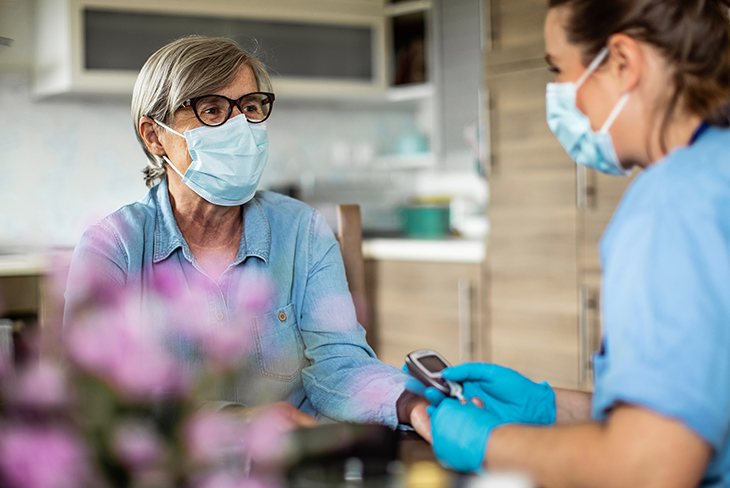Understanding patient rights in home-based care

Do you know the patient rights of your loved one who’s receiving home care? We chat to Gerda Strauss, Head of Service Delivery at the Cancer Association of South Africa (CANSA), about home-based care and share practical and insightful tips for caregivers, family members and patients.
Choice: allowing patients a preference
All patients should be encouraged to participate in the decision-making process as this is an important component of the Patient Rights Charter. Their preferences for care and treatment should be shared with the multidisciplinary team, as well as family members.
‘Sometimes patients cannot speak for themselves, and [in such cases] loved ones need to assist. However, the patient should always be fully informed about treatment and care decisions.’
Gerda says. She notes that an important part of caring for a patient at home is making sure the patient and their caregiver fully understands what treatments and care their medical aid covers and investigating alternatives if that becomes necessary.
Home-based care ranges from acute (critical care) to less acute (helping with dressing, bathing, going to the toilet, cooking and moving around the home safely), and the latter is geared towards independence and safety at home.
However, medical schemes typically do not support services in their assistance with occupational challenges as detailed above.
Home is where the heart is
It is not always easy for a person to submit to the care of others, especially if that caregiver is a family member. A person who feels frail or vulnerable and is in pain or lacking mobility might lash out at someone trying to help.
They might consider home care a constant reminder of their illness, be embarrassed about their living situation or resent the invasion of privacy, and all those feelings need to be validated.
‘The patient’s home environment should be adjusted for their care, but those changes need to be carefully navigated to maintain respect for the patient’s home space, which is an extension of them. Respectfully ask for permission to make any changes,’ explains Gerda.
When you are setting up a home-care environment, consider the following:
- Patient safety: what are the risks in the home and how can the environment be made safer?
- Environmental hazards: infection control is important, particularly if there is wound care involved.
- Caregiver: education and communication are vital for successful home care because a lack of training can be dangerous, and if language is a barrier to providing adequate care, it must be factored into clinical outcomes.
- Balance: there’s a fine line between patient autonomy and risk.
There are no quick fixes
Prior to the COVID-19 pandemic, CANSA hosted in-person support group meetings, but it has since had to move this to a virtual space, and also offer tele-counselling.
‘Cancer and other serious illnesses impact every facet of a patient’s life, including social interaction, relationships and perception/performance in the workplace. There are also significant financial implications to chronic illness.
The collective experience can be so difficult that sometimes patients need to be treated for post-traumatic stress disorder (PTSD),’ explains Gerda. Finding the right kind of support can become a vital lifeline for caregivers and the patient.
Support for caregivers
‘Caregivers are the soldiers fighting behind the scenes for their loved ones/patients,’ says Gerda. ‘They are often the unsung heroes of a survivor’s journey and, more often than not, have no “formal” training. It is important that they too feel supported and are equipped with information and skills to support their loved one/patient.’
Gerda cautions about compassion fatigue and burnout. ‘A myriad of emotions transpire in the caregiver’s role, and it is essential that the fears and stresses are dealt with sooner rather than later for the wellbeing of patient and caregiver,’ she says.
Download our list of patient rights and responsibilities for more information and always speak to a professional if you are struggling.
The information is shared on condition that readers will make their own determination, including seeking advice from a healthcare professional. E&OE. Life Healthcare Group Ltd does not accept any responsibility for any loss or damage suffered by the reader as a result of the information provided.

